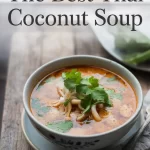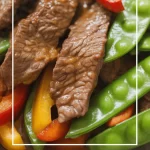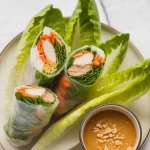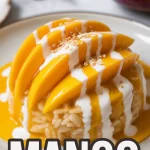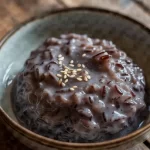I absolutely love making this Prik Khing curry paste because it lets me channel my inner chef with its perfect blend of aromatic spices and citrus notes. Plus, there’s something so satisfying about creating a rich, flavorful paste from scratch that can elevate any dish with its authentic Thai vibe.

My favorite thing about making Prik Khing curry paste is that it’s such a vivid medley of flavors. My base is the beautiful, spicy depth from the dried red chiles.
To that, I add beautifully aromatic galangal and lemongrass. My favorite part, though, is the toasted coriander and cumin, which round out the paste with warm, earthy notes.
Ingredients

Red Dried Chilies: They provide a fiery heat and contain capsaicin, which can rev up your metabolism.
Galangal: Contributes a peppery, lemony taste and promotes digestive health via its anti-inflammatory qualities.
Lemongrass: Conveys a clear, lemon-scented perfume and is abundant in antioxidants.
Kaffir Lime Rind: Offers a unique and fragrant citrus note, and has essential oils in it that are good for the immune system.
Coriander Seeds: Impart a warm, nutty flavor and provide digestive health advantages.
Garlic: Contributes profundity and intricacy; abundant with allicin, a compound celebrated for its health perks.
Shallots: Contribute mild sweetness and enhance the paste’s antiviral and antibacterial properties.
Offering umami depth and richness in protein, shrimp paste is a stellar source of essential minerals.
Ingredient Quantities
- 15 dried red chilies, seeded and soaked
- 1 tablespoon salt
- 1 tablespoon chopped galangal
- 1 tablespoon chopped lemongrass
- 1 tablespoon chopped kaffir lime rind
- 1 tablespoon coriander seeds, toasted
- 1 teaspoon cumin seeds, toasted
- 1 teaspoon white peppercorns
- 4 cloves garlic, peeled
- 4 shallots, peeled
- 1 teaspoon shrimp paste, roasted
Instructions
1. Start by making sure the dried red chilies that have been soaked are well-drained. Put them in a mortar or a food processor.
2. Introduce the salt to the chilies in order to aid in their breaking down and releasing of moisture.
3. Add the chopped galangal, lemongrass, and kaffir lime rind. These three key ingredients infuse the curry paste with aroma and a citrusy note that sets it apart.
4. Combine the toasted coriander seeds and cumin seeds with the mixture. At this stage, they should be warm to maximize the essential oils they will release. This will take the mixture from delicious to positively droolworthy.
5. The white peppercorns include not just a gentle warmth but also a depth of flavor that is hard to achieve otherwise.
6. Introduce the peeled garlic cloves and shallots. These components will enhance the paste with their fundamental savory layer.
7. Lastly, the shrimp paste should be roasted. The roasting deepens its umami flavor and adds more complexity to the paste.
8. When using a mortar and pestle, pound the mixture until it reaches smoothness and thickness enough to resemble a paste. When using a food processor, blend the mixture until it is completely smooth, using a spatula, if necessary, to ensure all ingredients come together.
9. If adjustments are needed, add a little water, but ensure the paste is still thick and rich.
10. When ready, put the Prik Khing curry paste into an airtight container. It can be kept in the fridge for a few weeks or in the freezer for much longer.
Equipment Needed
1. Mortar and pestle or food processor
2. Spatula
3. Airtight container
FAQ
- What type of dried red chilies should I use?Dried Thai red chilies, which are typically used in Thai cooking, can be substituted here. Use a quantity that caters to your heat-loving disposition.
- How do I prepare the dried chilies for the paste?Take the seeds out of the dried chilies, and put them in warm water for about 20 minutes to soften them before blending.
- Is there a substitute for galangal?If fresh galangal eludes you, ginger can serve as a stand-in, though the taste will be a touch different.
- Can I use lime zest instead of kaffir lime rind?Certainly! You can use lime zest instead, but if you want the real thing, you should seek out the rind of a kaffir lime.
- Why do I need to roast the shrimp paste?The flavor of the shrimp paste is intensified and its intensity reduced when the shrimp paste is roasted, making this a vital step for balanced curry paste.
- How can I store leftover curry paste?An airtight container in the fridge can hold the curry paste for up to two weeks. For longer storage, the paste can be frozen.
- What dishes can I make with Prik Khing Curry Paste?This paste is used the way you would use other kinds of stir-fry pastes. So think of it as something you’d put in a pan with some protein—pork, chicken, or tofu—and some green beans or other vegetables.
Substitutions and Variations
To substitute for dried red chilies, use fresh red chilies, adjusting the amount to suit your preferred level of heat.
To substitute for galangal: Use ginger, but keep in mind that the flavor will be somewhat different.
When using lemongrass, substituting with lemon zest is an option, although it might not provide the same delightful aroma.
To substitute kaffir lime rind with lime zest will impart a similar citrusy note.
To substitute for shrimp paste: Use fish sauce, but use less of it to keep the saltiness in check.
Pro Tips
1. Seed Removal When seeding the dried red chilies, wear gloves to protect your hands from the heat, and consider using a small pair of scissors to make the process easier and more precise.
2. Galangal and Lemongrass Prep Before chopping, smash the galangal and lemongrass slightly using the side of a knife or a meat mallet. This helps to release their aromatic oils, enhancing the flavor of the paste.
3. Roasting Shrimp Paste Wrap the shrimp paste in a piece of foil and roast it over an open flame or under a broiler for about 2-3 minutes. This intensifies its flavor without letting the aroma overpower your kitchen.
4. Ingredient Temperatures Make sure the toasted seeds are added while still warm. This small detail maximizes their aromatic oils and enhances the overall flavor profile of your paste.
5. Consistency Check Aim for the paste to be thick and smooth, adding water sparingly. This will ensure it adheres well to ingredients when used in cooking and retains its rich flavor.

Prik Khing Curry Paste Recipe
My favorite Prik Khing Curry Paste Recipe
Equipment Needed:
1. Mortar and pestle or food processor
2. Spatula
3. Airtight container
Ingredients:
- 15 dried red chilies, seeded and soaked
- 1 tablespoon salt
- 1 tablespoon chopped galangal
- 1 tablespoon chopped lemongrass
- 1 tablespoon chopped kaffir lime rind
- 1 tablespoon coriander seeds, toasted
- 1 teaspoon cumin seeds, toasted
- 1 teaspoon white peppercorns
- 4 cloves garlic, peeled
- 4 shallots, peeled
- 1 teaspoon shrimp paste, roasted
Instructions:
1. Start by making sure the dried red chilies that have been soaked are well-drained. Put them in a mortar or a food processor.
2. Introduce the salt to the chilies in order to aid in their breaking down and releasing of moisture.
3. Add the chopped galangal, lemongrass, and kaffir lime rind. These three key ingredients infuse the curry paste with aroma and a citrusy note that sets it apart.
4. Combine the toasted coriander seeds and cumin seeds with the mixture. At this stage, they should be warm to maximize the essential oils they will release. This will take the mixture from delicious to positively droolworthy.
5. The white peppercorns include not just a gentle warmth but also a depth of flavor that is hard to achieve otherwise.
6. Introduce the peeled garlic cloves and shallots. These components will enhance the paste with their fundamental savory layer.
7. Lastly, the shrimp paste should be roasted. The roasting deepens its umami flavor and adds more complexity to the paste.
8. When using a mortar and pestle, pound the mixture until it reaches smoothness and thickness enough to resemble a paste. When using a food processor, blend the mixture until it is completely smooth, using a spatula, if necessary, to ensure all ingredients come together.
9. If adjustments are needed, add a little water, but ensure the paste is still thick and rich.
10. When ready, put the Prik Khing curry paste into an airtight container. It can be kept in the fridge for a few weeks or in the freezer for much longer.




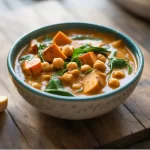
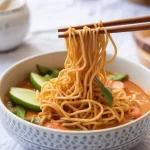

![Thai Coconut Soup [Coconut Milk Soup] Recipe](https://bangkokbowl.com/wp-content/uploads/2025/06/Collage_Thai-Coconut-Soup-Coconut-Milk-Soup-_1751036922-150x150.webp)
